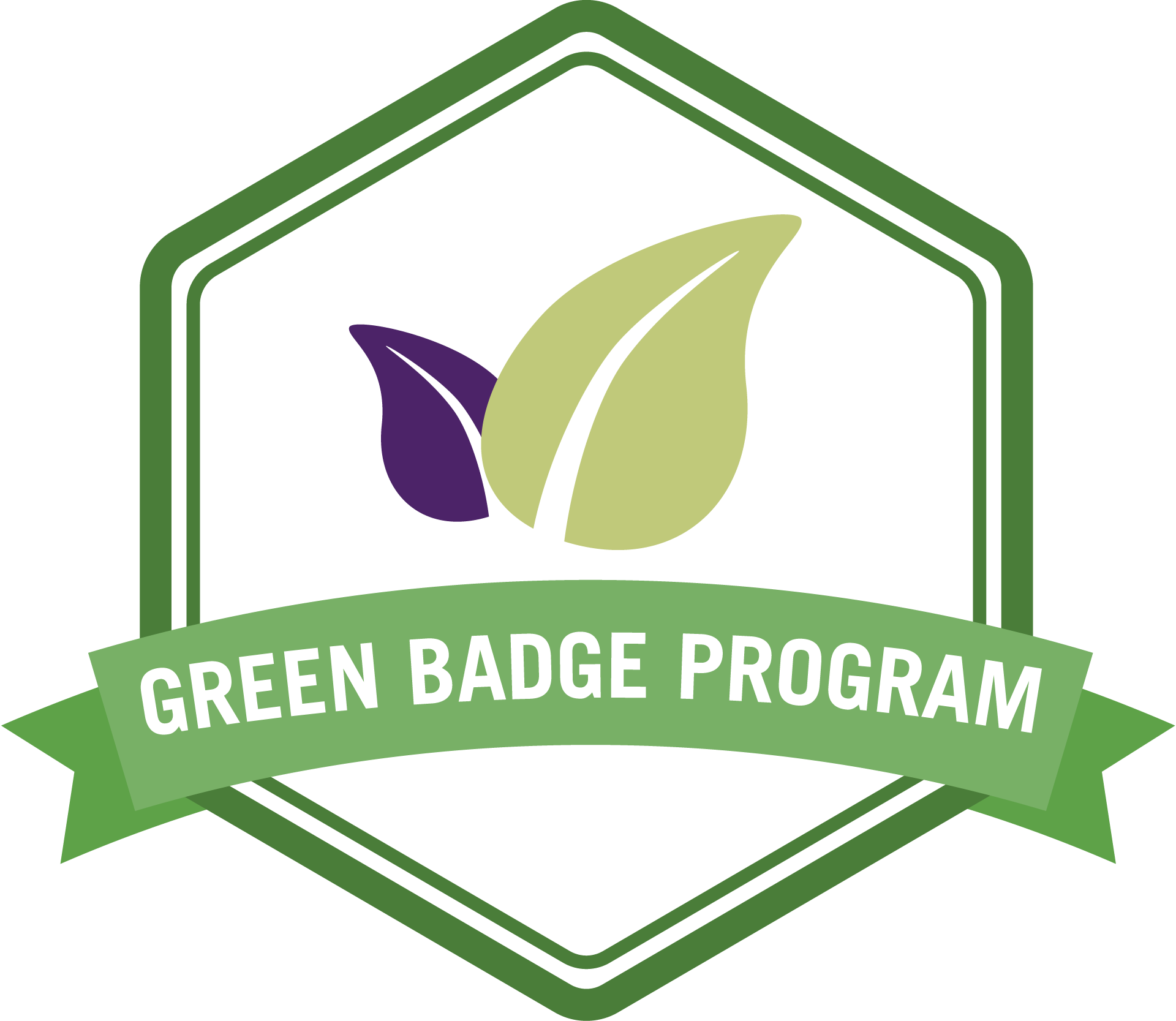
Food Sustainability
Instructions: To obtain your Food Sustainability badge, it is recommended that you complete the following by February 2, 2026.
**Only submit the form once you have completed all of your actions. Remember, you only have to complete the prerequisite and 2 additional actions of your choosing. You do not have to complete all of the actions to earn your badge. |
Prerequisite:
Prerequisite Action: Learn more about Food Sustainability
Description: Watch the two videos below to learn more about food sustainability and the impact food waste and our diets can make.
- "Food Waste: The Hidden Cost of the Food We Throw Out" (4:52)
- "The diet that helps fight climate change" (5:39)
Time Commitment: 15 minutes
Required Documentation: Write 3-4 sentences about what you learned from each of the videos.
Choose at Least Two of the Following Actions:
Action 1: Attend the Sustainability Snapshots with SPARC (Jan. 13th)
Description: Attend this month's Sustainability Snapshot with SPARC featuring a panel of three professors/faculty who will present on what they are doing sustainability-wise. See details below:
- When: January 13th from 1:30 pm - 2:45 pm
- Where: Stewart Library, Hetzel-Hoellein (Room 321)
Time Commitment: 1 hour+
Required Documentation: Check in at the event and write 3-4 sentences about what you learned.
Action 2: Attend or Volunteer at The Plant-Powered Food Tasting Event (TBD)
Description: Discover the delicious world of plant-based foods and learn about their benefits for your health and the environment. This event will take place in the Shepherd Union from TBD Signup to volunteer via GivePulse here TBD.
Time Commitment: Varies from 10 mins - 2 hours (dependent on whether you are attending or volunteering).
Required Documentation: Upload a photo of you at the food tasting or the food you tasted.
Action 3: Volunteer With The Food Recovery Network
Description: Volunteer with the Food Recovery Network (FRN) to recover food. Surplus food is packed up from dining services and delivered to either the Lantern House or the Weber Cares Food Pantry. For the spring 2026 semester, recoveries will be held each Tuesday and Friday from TBD. If you have any questions regarding recoveries, please email: foodrecoverynetwork@weber.edu.
- To volunteer with the Food Recovery Network, you must sign up through Givepulse TBD(availability limited).
Time Commitment: 30 minutes - 1 hour (varies by food recovery)
Required Documentation: Check in at the event & upload a photo of yourself volunteering at the food recovery.
Action 4: Make A Plant-Based Meal
Description: Find a plant-based recipe of your choice, gather your ingredients, and create your meal! Plant-based meals are often just as tasty as animal-based meals. By reducing how much meat you consume, you can significantly reduce your carbon & water footprints. Check out "A Guide to a Sustainable Garden and Kitchen" for more info and some plant-based recipes.
Time Commitment: 1 hour (varies)
Required Documentation: Write 3-4 sentences on your experience. Don't forget to give yourself 5/5 stars!
Action 5: Take a Food Preservation Class and/or Preserve Your Food
Description: Food preservation (canning and freezing) helps reduce food waste and provides a way to eat local produce through the off-season. Utah State University offers several courses (usually in Spring, but there are a few online or on-demand courses) and additional preservation resources here.
Time Commitment: 1 hour +
Required Documentation: Write 3-4 sentences about the course you took or the food you have chosen to preserve.
Action 6: Take a "Create Better Health" Online Course
Description: Create Better Health classes are available online! This self-paced course is available at no cost to those who qualify. Lessons include stretching food dollars, meal planning strategies, quick and easy recipes that fit into a busy schedule, along with recipe demonstrations and an explanation of basic cooking skills. Learn more here.
Time Commitment: varies
Required Documentation: Write 3-4 sentences about what course you took and what you learned.
Action 7: Donate Money, Time, or Food to a Local Food Pantry
Description: There are a lot of ways to help out your local food pantry. Whether that is community service, money, or food donations, click here for information about Weber Cares Pantry and other local food assistance programs.
Time Commitment: varies
Required Documentation: Write 3-4 sentences about your experience and what you donated.
Action 8: Regrow Some Vegetables From Kitchen Scraps
Description: Eliminate the need to buy veggies from the store and regrow them from home using a small pot of soil or jar of water. Click here for a quick overview of a few vegetables you can quickly regrow from cuttings.
Time Commitment: 15-30 minutes
Required Documentation: Submit a photo of your setup to regrow a vegetable.
Action 9: Reduce Food Waste
Description: Over the course of a week, track and/or weigh the preventable food waste your household produces and throws away. Per the EPA, "Preventable food waste is both food you bought to eat but has since spoiled and food that was prepared but not eaten and was then thrown away. Non-Edible food waste is everything you wouldn't normally eat, such as banana peels, egg shells, apple cores, and chicken bones." Click here for an example log sheet. Utah State University has a great resource on food waste and possible solutions.
Time Commitment: 1.5 hours over the course of a week
Required Documentation: Write 3-4 sentences about how much was thrown away & what changes could be made to reduce food waste in the future.
Innovation Action:
Description: Innovative actions are welcome, but please email greenbadge@weber.edu for approval before submitting this as one of your actions.
Time Commitment: varies
Required Documentation: varies

Additional Resources
- Food Sustainability StoryMap
- Diet Change-A Solution to Reduce Water Use?
- Indoor Air Pollution from Cooking
- O-Town Kitchen
- Reducing Food Waste at Home
- Sustainable Management of Food
- Utah State: Yard and Garden
- WSU Community Garden
- WSU Food Recovery Network
